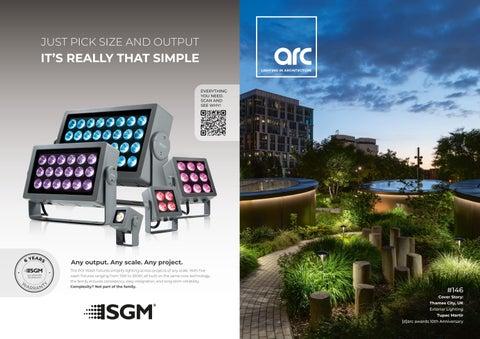Multimedia designer Education: Essential Degrees, Skills, and Career Pathways
The demand for Multimedia Designers in education technology is rapidly growing as universities, colleges, and schools continue to embrace digital transformation. If you’re passionate about combining creativity, technology, and education, a role as a multimedia designer in the academic sector may be yoru perfect career path. in this thorough guide, we’ll dive deep into the essential degrees, skills, and career pathways for multimedia designers in education, while highlighting the many benefits, practical tips, and industry trends that can help you stand out in this dynamic field.
What Does a Multimedia Designer in Education Do?
Multimedia Designers in the education sector are creative professionals who use digital tools to develop engaging learning materials.They blend graphics, audio, video, animation, and interactive content to facilitate more immersive and effective learning experiences for students and educators alike. Their primary responsibilities can include:
- Designing e-learning modules and interactive lessons
- Developing instructional videos, presentations, and animations
- Collaborating with educators to translate complex concepts into visual content
- Editing audio, video, and graphics for online courses and classroom instruction
- Ensuring content meets accessibility and usability standards
Essential Degrees for Educational Multimedia Designers
while there are multiple entry points into the field, having the right academic qualifications increases your competitiveness as a multimedia designer in education. Employers often look for candidates with at least a bachelor’s degree. Common degree options include:
-
Bachelor’s Degree in Multimedia Design or digital Media
These programs offer comprehensive training in graphic design, UX/UI, animation, and video production—all core skills for educational multimedia design.
-
Bachelor’s Degree in Instructional Design or Technology
Focused on the intersection of education and technology, these degrees equip you with pedagogical knowledge alongside multimedia skills.
-
Related Degrees
degrees in Graphic Design, Visual Arts, Communication, Computer Science, or a teaching-related field can also be highly relevant, especially when supplemented with multimedia coursework.
-
Master’s Degrees
Some roles, particularly those at universities or in leadership, may require or prefer a master’s in Instructional Technology, Digital Media, or Educational Technology.
Certifications and Continuing Education
In addition to formal degrees,various certifications can definitely help you stand out:
- Adobe Certified Expert (ACE)
- Certified Instructional Designer/Developer (CIDD)
- Apple Certified Pro – Final Cut Pro X
- Articulate Storyline or Captivate certification
- Certificates in Learning Management systems (e.g., Moodle, Canvas)
Ongoing professional development is key. Online courses, workshops, and seminars ensure your skills stay current in the fast-evolving EdTech field.
Key Skills for Multimedia Designers in Education
The skills required for success as a Multimedia Designer in education are both technical and creative. here are the most sought-after abilities:
Technical Skills
- Proficiency with multimedia software (Adobe Creative Cloud, Articulate, Camtasia, etc.)
- Video and audio production and editing
- Motion graphics and animation basics (After Effects, Blender, etc.)
- UI/UX design principles for educational applications
- HTML, CSS, and basic web development skills
- Experience with Learning Management Systems (LMS)
Creative & Soft Skills
- Strong visual storytelling ability
- Attention to detail and organization
- Collaboration with teachers, subject matter experts, and IT specialists
- Time management and ability to meet tight deadlines
- Strong writen and verbal communication
- Problem-solving and adaptability
Career Pathways for Multimedia Designers in Education Technology
Whether you’re eyeing a role at a university, community college, or K-12 institution, the career pathways for educational multimedia designers are both diverse and rewarding. Below are typical career progression steps:
-
Entry-Level Roles
- Multimedia Production Assistant
- eLearning Content Developer
- Digital Media Associate
-
Mid-Level Positions
- Instructional Multimedia Designer
- Educational Technologist
- Media Content Specialist
-
Advanced and Leadership Roles
- Senior Multimedia Designer
- Lead Instructional Designer
- Director of Digital Learning or Educational Media
With experience, some multimedia designers also branch into consulting, curriculum development, or even academic research on digital learning technologies.
Benefits of Working as a Multimedia Designer in Education
- impactful Work: Create digital content that enhances learning outcomes for thousands of students.
- Collaborative Environment: Work closely with educators, administrators, and technology experts.
- Continuous Learning: Stay ahead with the latest tools and pedagogical strategies.
- Job Stability: Educational institutions offer competitive salaries, benefits, and work-life balance.
- Creative Satisfaction: Transform ideas into visually compelling learning tools daily.
Practical Tips for Landing a Multimedia Designer job in Education
- Build a Strong Portfolio: Showcase your best educational multimedia designs,videos,and eLearning modules. Highlight diverse formats and audiences.
- Gain Real-World Experience: Volunteer to collaborate with educational nonprofits or intern with academic technology departments.
- Network Actively: Attend EdTech conferences, join professional groups, and connect with educators and technologists in your region.
- Customize Your Application: Tailor your resume and cover letter to each institution’s unique mission and learning philosophy.
- stay Current: Regularly update your skills with new software and educational technology trends.
Trends Shaping the Future of Educational Multimedia Design
The education technology field is always evolving. Here are a few trends multimedia designers should watch:
- Artificial Intelligence and Personalization: Adapting content for individual student needs.
- Virtual and Augmented Reality (VR/AR): Creating immersive simulations for hands-on learning.
- Gamification: Making learning more interactive and motivating.
- Mobile-First design: Ensuring educational resources are accessible on all devices.
- Accessible and Inclusive Content: Designing materials that meet diverse learner needs.
Conclusion
Launching a career as a Multimedia Designer in education technology offers both personal fulfillment and professional growth. With the right education, technical and creative skills, and a keen eye on industry trends, you can play a key role in shaping the digital learning landscape at universities, colleges, or schools.start building your portfolio, connect with industry professionals, and step confidently into a rewarding career that makes a difference in educational outcomes every day.

